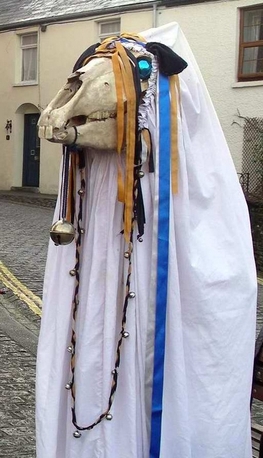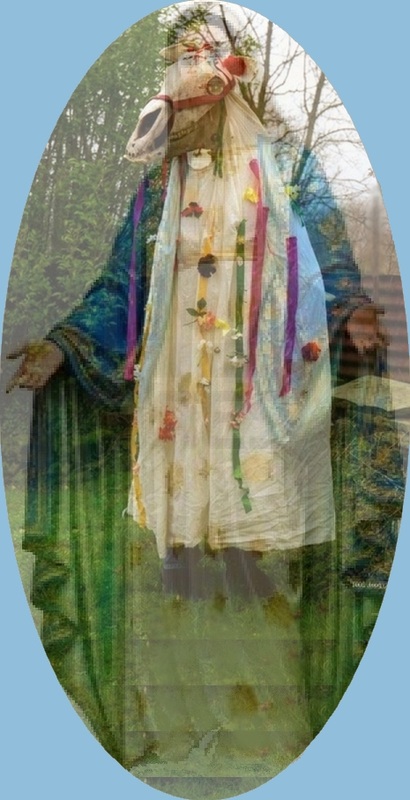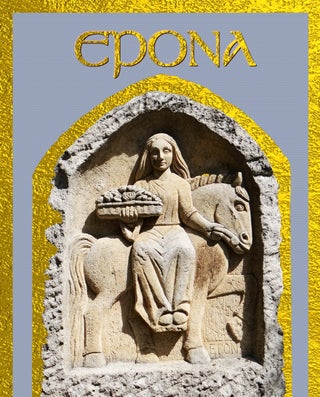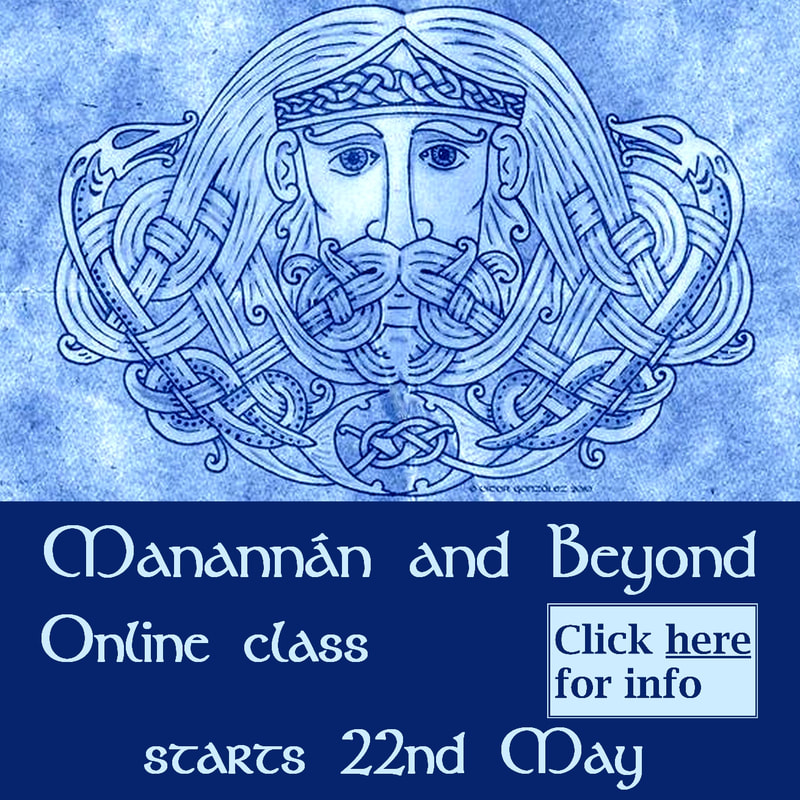Were there horse cults in ancient Britain? Is there a cohesive thread connecting Macha, Epona and Rhiannon to hobby horses, the Mari Lwyd and the Uffington horse?
| I don't remember when I first heard about the Welsh Mari Lwyd tradition, but it has fascinated me ever since. For those who don't know, the Mari Lwyd is made by fixing a mare's skull to a pole. Usually elaborately decorated, the head is carried by a person hidden under a robe made from a white sheet or something similar. The Mari is accompanied by a party (traditionally of men and boys) who carry it from house to house, seeking admission. This is done through an elaborate, partly improvised, battle of wits in rhyme. Generally, the householders ultimately "lose" the contest, and the Mari party gain admission, where merriment, eating, drinking and music follow before the Mari moves on to the next house. The tradition has a lot in common with other wassailing and mumming traditions, many of which occur around midwinter. What strikes a chord with me is the horse connection. Britain, Ireland and the Celtic world is rife with what appear to be remnants of a widespread horse cult or cults. I am only a very amateur historian, and I won't even attempt to draw concrete, historically "proven" connections between the many signs pointing in this direction. That's not to say that I will ignore what evidence and dating I understand, but rather to say that being who I am, and feeling what I feel, I will not ignore the empirical reality of my intuition, either. |
Mari Lwyd, Horse of Frost, Star-horse, and White Horse of the Sea, is carried to us.
The Dead return.
Those Exiles carry her, they who seem holy and have put on corruption, they who seem corrupt and have put on holiness.
They strain against the door.
They strain towards the fire which fosters and warms the Living.
We bring from Cader Idris
And those ancient valleys,
Mari of your sorrows,
Queen of the starry fillies.
| Meanwhile, in folklore we find a rich assortment of kelpies, njuggles, water horses, and other supernatural equines which lure people onto their backs and try to drown them. Then there are the hobby horses and other mumming horses found throughout Britain and Ireland. Are all these things related? It's just possible that they are not. It's just possible that only vaguely related peoples, in different times and places, have felt a fascination, a love, an awe and some fear connected with the horse, both as a natural being and a supernatural one. My personal gnossis says otherwise. Call it intuition or call it something else, I personally do not believe that this is all just one big coincidence. I choose to connect these things, and I choose to connect them knowing that I can't possibly fully understand their historical origins. I don't know the ancient rites which probably once accompanied the honouring of horse deities, and I don't know why people were so fascinated with the idea of malevolent horses bent on drowning the unsuspecting. Neither do I know what prompts people to put on highly stylised hobby horse costumes and dance ecstatically through Cornish streets on May Day, or why so many traditional mummers' plays include a person dressed as a horse. I don't know why I feel a strange reverence for these things when I meet them, either - but I definitely do. |
Great light you shall gather,
For Mari here is holy;
She saw dark thorns harrow
Your God crowned with the holly
Under the womb of teeming night
Our Mari tries your faith;
And She has Charity’s crown of light:
Spectre she knows and wraith;
Mari Lwyd, Lwyd Mari:
A sacred thing through the night they carry.
Betrayed are the living, betrayed the dead:
All are confused by a horse’s head.
O white is the frost on the breath-bleared panes
And the starlike fire within,
And our Mari is white in her starry reins
Starved through flesh and skin.
It is a skull we carry
In the ribbons of a bride.
And what of her snapping jaws? The snapping jaws of the Mari, of the hobby hoss who chases the maidens of Padstow to shrieks of fear and delight. Does this echo the strange beaked mouth of the Uffington horse - so often remarked at as being un-horse-like? Is it an accident that the Mari in her sheet so resembles Mary in her veil and robes? We are in goddess territory here, maybe in shaman territory, too. We are warm in the house, smugly awaiting the opportunity to be open-handed, and we are bone-cold at the window, desperate to gain admission to life inside. Perhaps we are required to know both realities.
Poetic quotes from Ballad of the Mari Lwyd by Vernon Watkins (1906 - 1967)
This six week online class will explore the goddesses Epona, Macha, and Rhiannon in detail, as well as looking at the changing relationship between humans and horses. Like other classes I have taught, this series will feature a largely objective “academic” component, including some reading, and a talk from me each week, with time for questions.
In a departure from my usual approach, I will lead a short devotional to the horse goddesses and horse spirits at the end of each class session. I will do my best to create these in a way that should be comfortable for most anyone, but if students would like to excuse themselves from this part of the session, that is perfectly fine.
The course outline is available at this link.




 RSS Feed
RSS Feed




